Bolted Big Walls? In Mexico? Yes Please.
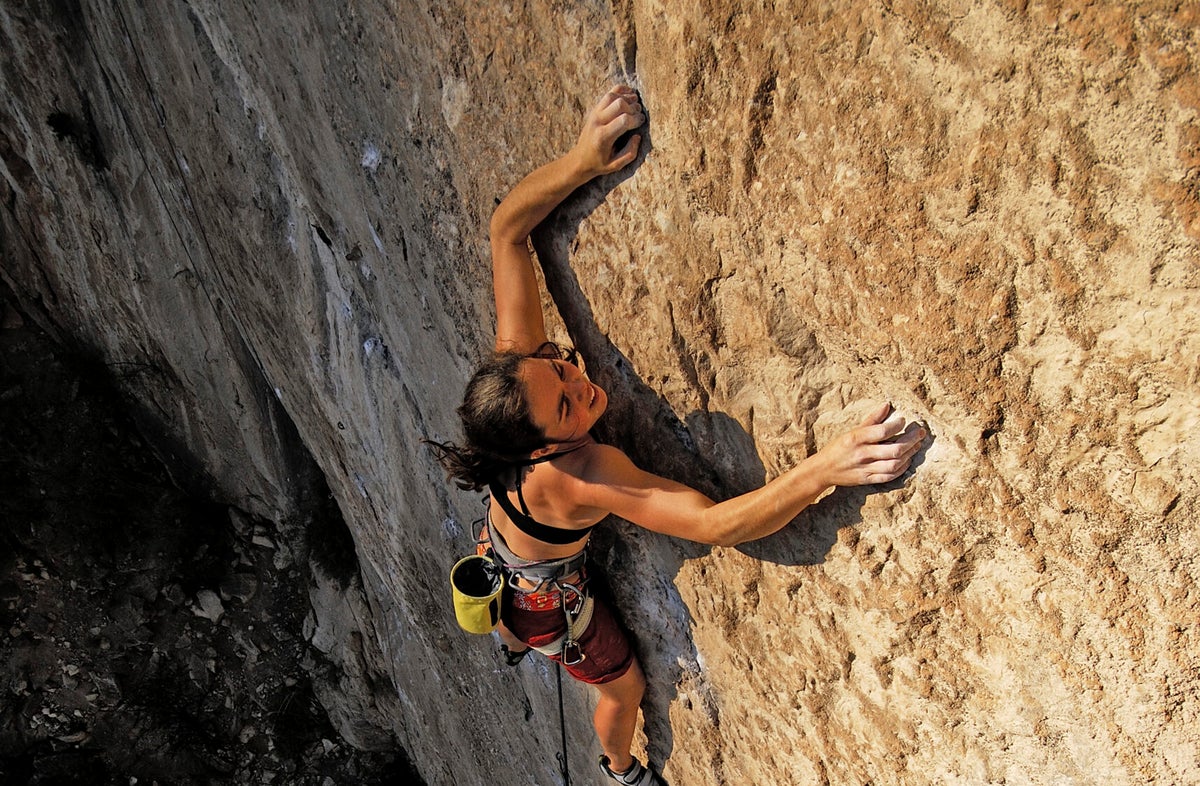
The cracked pavement gave way to dusty gravel as we rode away from Monterrey. Mountains shrouded in mid-afternoon haze from the nearby Cemex cement plant loomed over our little car. As we approached El Potrero Chico, the vertical limestone buttresses—some over 2,000 feet tall—came into focus. Soon, we could see climbers like insects in brightly-colored puffy jackets scaling the faces between thickets of wild agave and prickly pear cactus. Despite being exhausted after days of travel, we rushed to join them.
El Potrero Chico, or “the little corral,” is a bolted limestone playground located just outside the small town of Hidalgo in Nuevo León, Mexico. Hidalgo grew around the Cemex plant, established in 1906, but when climbers began flocking to the nearby mountains the local economy shifted to rely largely on tourism. Today, Hidalgo boasts large outdoor markets, restaurants, and grocery stores, all within walking distance of the park entrance.
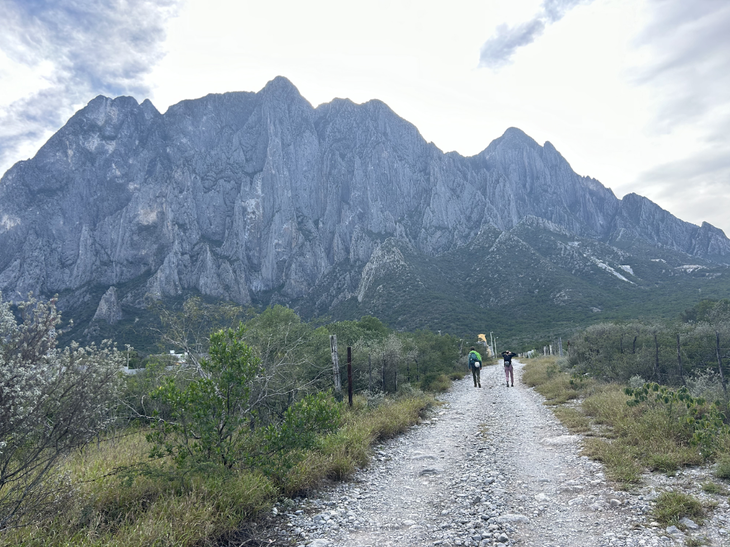
Texas climbers Jeff Jackson, Kevin Gallagher, and Alex Catlin began bolting projects in El Potrero Chico in the early 1990s, shortly after sport climbing became popular in the United States. Some routes have not been rebolted since their original development, but most classics have seen frequent maintenance. A sign at the park’s entrance claims that the park hosts “the first big-wall climbs in Latin America.” Despite this grand proclamation, all the multipitch routes in the canyon can be completed in under a day by an experienced party.
The Climbing
El Potrero Chico boasts dozens of long multipitch sport routes with generous bolting and short approaches. The road to the canyon is paved, and approaches to many classic routes, such as Estrellita (5.10b, 12 pitches) and Space Boyz (5.10d, 11 pitches), involve little more than a short stroll on a sidewalk. An efficient party can easily get 1,000 feet above the deck before lunchtime, rappel for tacos at the park entrance, and do it again in the afternoon.
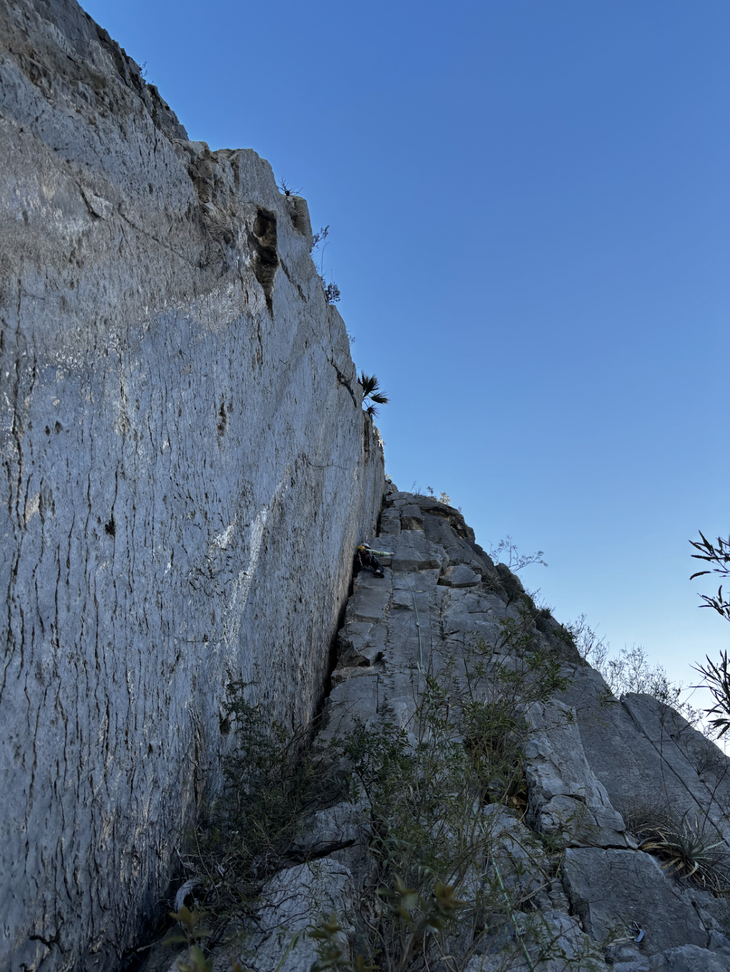
Most routes are entirely fifth-class. The limestone lends itself to techy vertical climbing, with cruxes that demand thoughtful problem-solving rather than power. Often, a sequence that appears impossible from the ground is unlocked by arranging your body in an improbable position on small footholds and high-stepping to a hold you hope is positive. Expect a calf burn!
Moderates are riddled with directional jugs that look like slopers and crimps from below. With patience, you’ll learn to recognize good holds and move your body to use them.
Route spotlight: Yankee Clipper (5.12a, 15 pitches)
Many people skip the final crux pitch of this classic, making for a variation comprised of three varied, thought-provoking 5.10 pitches: one sustained, vertical pitch with technical sequences on pockets down low, one steep jug-haul with a distinct high crux, and one wide, closed-in dihedral that demands a few moves of chimney technique and emerges above nearly 1,500 feet of exposure. The crux pitches are distributed rather evenly between 11 more pitches of 5.8 and 5.9 romping on jugs with the occasional techy sequence. Most of the pitches can be linked with a 70-meter rope and 20 draws.
The main drawback of the area is loose rock. Even the most repeated classics have several loose holds or sections, and those that top out often do so on teetering piles of choss. Because of this, we put helmets on as soon as we approached the base of the cliff and kept them on until we were on the ground and out from under populated climbs. Most loose blocks are either obvious or marked with an X, but be gentle when pulling on flaky jugs as some chalk marks may have worn off. When rappelling, saddle-bagging or coiling rope over your shoulders is preferable to throwing the rope to avoid dislodging loose rocks. Some have reported rockfall from pulling on stuck ropes tossed to rappel. Since most routes descend with multiple rappels on the same anchors used to climb, this could present a danger to your partner or other parties below you.

The vertical climbing does not lend itself to comfy belay ledges, and you’ll find yourself coiling the rope in your lap on most multipitch routes. Familiarize yourself with this technique to avoid becoming mired in a rat’s nest or short-roping your leader. If you’re worried about back pain from sitting in your harness all day, consider investing in an inexpensive big-wall harness. These are bulkier and better padded than traditional sport climbing harnesses, and many boast extra gear loops, which may be useful if you’re bringing large racks of quickdraws to link pitches.
In addition to El Potrero Chico’s notorious multipitch routes, the area boasts some stellar single-pitch climbing. The TNT wall features steep pocket climbing ranging in difficulty from 5.8 to 5.12a. For a gentler introduction to climbing on limestone, the Virgin Canyon is home to dozens of three- and four-star climbs in the 5.8 to 5.10- range.
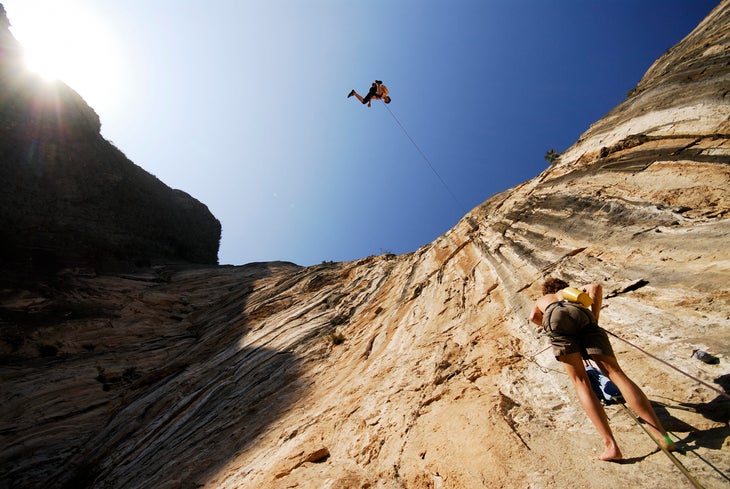
Logistics
When to Go
The main season for climbers is winter, between November and March. During this time, the weather—usually in the 60s or 70s during the day, with nights dipping into the 40s—lends itself to long days out at sunny and shady crags alike. Local hostels and campgrounds are also dense with climbers from all over the world, making it easy to find a partner. During the summer, locals descend on the canyon to party and frolic in a nearby waterpark. If you visit during the summer, plan to seek shady crags and bring lots of water up long routes.
Gear
- Rope: A 70-meter rope is mandatory for many rappels and if you plan to link pitches. Some single pitches on classic routes, such as Pitch Black, are over 30 meters long.
- Draws: Bring at least 16 quickdraws, and up to 30 if you plan to link pitches.
- Anchors: For multipitch transitions and rappels, bring some anchoring material to place on hangers or chains. I like tying a quad on a quadruple-length sling and attaching it with two non-locking carabiners. My partner favors a cordalette and small lockers.
- Belay device: Every route descends with multiple rappels. My partner and I prefer pre-rigging and rappelling one at a time with a tube-style device extended on a sling and a third hand. Many people choose to simul-rappel with assisted braking devices like GriGris. If you choose this technique, make sure you understand how to mitigate its inherent risks.
- Helmet: Because of the loose rock on nearly every route, a helmet is mandatory.
- Guidebook: The most up-to-date guidebook is Frank Madden’s EPC Climbing 3rd edition. The book includes detailed topos, route descriptions, and pitch breakdowns for every established route in the canyon. You can buy the book in print here. I opted for the digital version on Rakkup, which connected to the GPS on my phone so I could navigate easily. In addition, the Mountain Project entries for many routes are quite thorough, and many classics have metal tags at the base so you can verify that you’re getting on the right route.
- Forget something?: The offices at the Rancho El Sendero and La Posada hostels have small gear shops.
Language
Most of the locals speak very little English, so knowing at least the basics in Spanish may make your trip easier. That said, signs and restaurant menus usually are printed in both English and Spanish, and many of the American visitors who I met spoke no Spanish. A language barrier may make it difficult to communicate with locals, but it will not present significant barriers to getting what you need.
Getting there
From the United States, it is easiest to fly into Monterrey, then either rent a car or get a ride to the canyon. Ride services like Uber may not pick you up because of local laws prohibiting their operation at airports. If you are staying at one of the local hostels or campgrounds, you won’t need a car after you arrive because climbing and services are both within walking distance. The ride from the airport to the canyon is about an hour. On the way to the canyon, we paid 689 pesos (about 40 USD) for a taxi to the campground.
Most campgrounds and hostels in the area offer rides to and from the airport, which you can arrange when you book a room. These services usually include a stop at a grocery store, where you can buy food and get cash from an ATM. To return to the airport, we paid 1,400 pesos (about 80 USD) for a ride from the hostel to the airport. Though car services from hostels are more expensive than regular taxis, they are more reliable and therefore recommended when you have a flight to catch.
Where to Stay
The road to the park is lined with hostels and campgrounds, but most climbers stay at one of three. For an intimate community feel and the mid-priced rooms, book a stay at Rancho el Sendero. They offer a campground, hostel, and private rooms. In addition, guests have use of a large community kitchen with food storage, a pool, and a small climbing gym. Many people come to El Sendero alone, making it a great place to find climbing partners. On Saturday nights, guests can take Salsa and Bachata classes in the modest bar, and anyone can enjoy the buffet on Fridays during the climbing season. This hostel is farthest from the canyon, about a fifteen-minute walk from the park’s entrance. Rooms and campsites may be booked online.
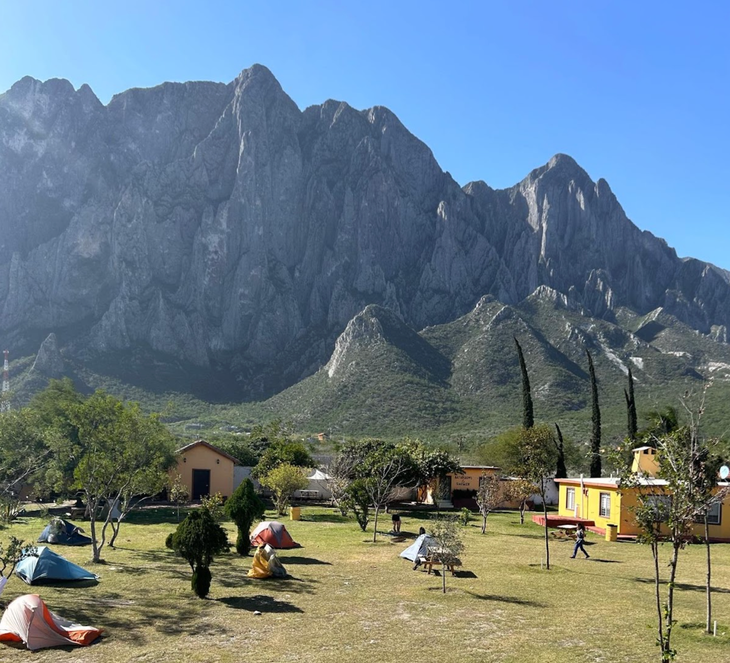
Quinta La Pagoda is slightly closer to the canyon and has cheaper rooms than Rancho El Sendero. The hostel is a bit run-down, but a maintenance crew keeps the essentials functioning. It is a great budget option for those just looking for a place to sleep. Guests have use of a community kitchen and pool. La Pagoda is typically one of the last locations to fill up during peak season.
La Posada is a bit newer than the other two options, with modern and well-maintained facilities, including a pool and a gear shop. If you plan on a longer visit, La Posada might be the best budget option, as they offer a 50 percent discount to guests staying for more than 30 nights.
Eating
The food in El Potrero Chico is delicious and cheap. The road to the park offers several barebones taquerias, where you can recover from a long climbing day over colossal margaritas and endless chips and salsa. For a more substantial meal, Leo’s tacos grill offers an unlimited buffet of rice, beans, tacos, and meat for around $15 per person. On Fridays, the buffet at Rancho el Sendero offers a lavish spread of traditional Mexican dishes, salad, and pizza. Vegetarian options are easy to find everywhere. Most restaurants only take cash, so get pesos from the ATM in Hidalgo before visiting.
For groceries, visit one of several small grocery stores in the town of Hidalgo, about a 40-minute walk from the canyon. On Tuesdays and Fridays, a market in the town center attracts climbers and locals. Here, you can buy local produce and fresh-cooked meat, as well as clothing and household items.
El Búho, a cozy American-run coffee shop in Hidalgo, has been a fixture in the climbing community since it opened in 2010. In addition to great coffee and pastries, the coffee shop operates a book swap to benefit local public schools. It’s a great place to go for information about the area from knowledgeable English-speaking employees.
Recommended Moderates
The good multi-pitch climbing generally starts at 5.10. For a gentler introduction to the area’s climbing, begin on easier single-pitch routes.
- Zombie Wolf, 5.8
- Cat Daddy, 5.9
- Mr. Fluffer’s Wild Ride, 5.9+
Recommended Multipitch Routes
Note that the sharp limestone edges can feel assertive at first, but become manageable with good body positioning and footwork.
- Five Pitch Harmony, 5.9, 5 pitches
- Will The Wolf Survive? 5.10a, 4 pitches
- Excalibur, 5.10a/b, 6 pitches
- Yankee Clipper (minus the last pitch), 5.10b, 14 pitches
- Estrellita, 5.10b/c, 12 pitches
- Pitch Black, 5.10d, 6 pitches
- Snott Girlz, 5.10d, 7 pitches
- Space Boyz, 5.10d, 11 pitches
Also Read
- The Best Harnesses for Hard Sport and Long Days in the Alpine
- Beth Rodden was a Visionary Yosemite Climber. Now, She Introduces the Rest of Herself
- Why Do So Many Climbers Not Wear Helmets?
The post Bolted Big Walls? In Mexico? Yes Please. appeared first on Climbing.

